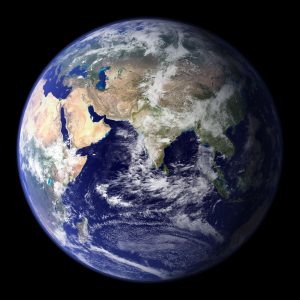A walk around the Earth is equivalent to, if you walk from Klokkerholm to Hjallerup and back, every day for approx. 10 years. If you do this for 90 years you would reach the Moon!
every day for approx. 10 years. If you do this for 90 years you would reach the Moon!
The Earths average distance to the Sun is known to be 149 597 871 km. This distance is difficult to comprehend in kilometer and thus, the Earth-Sun distance defines the astronomical unit and often used to indicate distances within the Solar System.
The size of the Earth’s Moon is very large compared to the Earth but is not the largest Planet-Moon size ratio. The diameter of Pluto is only about twice the diameter of its largest moon. The Earth-Moon diameter ratio is only 3.7
Water is found in many places in the Solar System, but quite unique for Earth, water is found in three phases: solid, liquid and gaseous phase.
 The Moon formed 4.53 billion years ago. The Moon causes tides in the Earth’s oceans and stabilizes the axis tilt of the Earth. The Moon also slows down the rotational speed of the Earth.
The Moon formed 4.53 billion years ago. The Moon causes tides in the Earth’s oceans and stabilizes the axis tilt of the Earth. The Moon also slows down the rotational speed of the Earth.
The Earth is often called ”The Blue Planet” because 71% of its surface is covered by water. The water originates mostly from volcanic activity and small contribution from comet and asteroid impacts.
A bombardment of comets in the early history of the Earth played a role in forming the planets oceans. Later asteroid impacts made significant changes to the conditions on the Surface. The presence of Water on the surface and an atmosphere is a prerequisite of life on Earth.
This link goes to a page that shows todays chances of seeing aurora – northern light: http://www.aurora-service.eu/aurora-forecast/